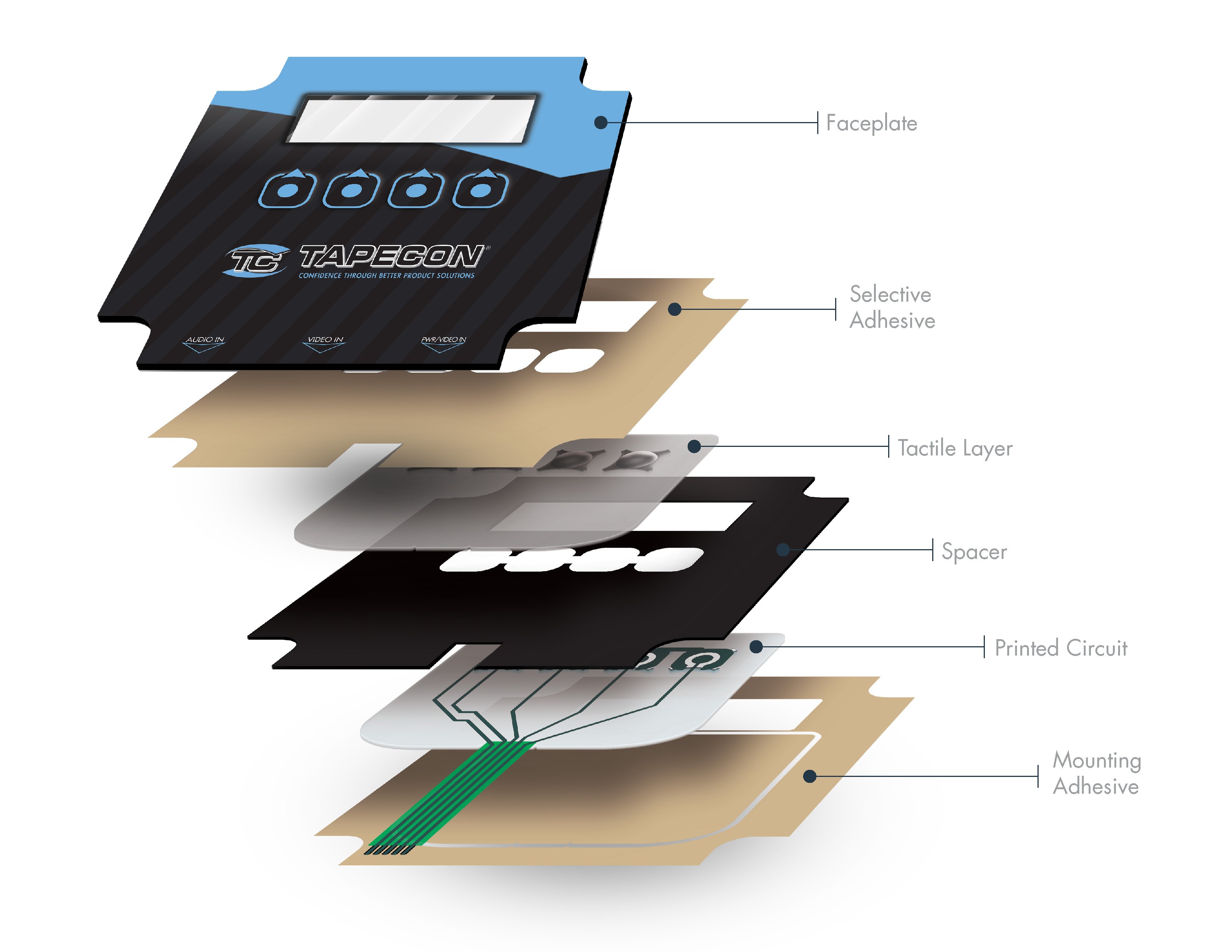Discover the Function of Membrane Switches in Medical Tools and Equipment
Discover the Future of Control Interfaces: Why Membrane Switches Over Are Getting Appeal
As markets progressively prioritize easy to use and efficient control user interfaces, membrane layer switches are becoming an engaging remedy that combines functionality with design versatility. Their strength and compact nature make them especially matched for a range of applications, from medical care to customer electronic devices. With the rise of wise technology and sustainability problems, the capacities and advancements bordering membrane layer changes warrant better exam. What certain benefits do they provide that could redefine our interactions with innovation in the coming years?
Comprehending Membrane Layer Buttons
Membrane buttons are essential components in modern-day electronic devices, functioning as interfaces between individuals and makers. These buttons include numerous layers, commonly consisting of a graphic overlay, a spacer layer, and a circuit layer. When an individual presses a switch on the overlay, the top layer makes call with the circuit layer, finishing a circuit and sending a signal to the device. This basic yet effective device permits seamless communication with modern technology.

Longevity is an additional essential function, as membrane layer switches can be made to stand up to environmental elements such as wetness, dust, and chemicals. This durability makes them excellent for applications in harsh conditions. Overall, understanding the framework and feature of membrane buttons is vital for appreciating their duty in the development of customer interfaces in today's technology-driven world.
Secret Advantages of Membrane Switches
Offering a series of advantages, membrane layer switches have come to be a recommended selection in various applications (Membrane Switches). Among the main advantages is their portable style, allowing makers to optimize space in devices without endangering capability. Membrane layer switches are light-weight, which is particularly beneficial in portable electronic tools

Additionally, these switches provide outstanding toughness. Created from adaptable materials, they are immune to dirt, dampness, and a selection of environmental aspects, making them appropriate for severe problems. This durability commonly translates right into a longer life expectancy compared to traditional mechanical buttons.
Furthermore, membrane switches permit seamless assimilation of signs and graphics, using aesthetic adaptability and enhancing individual experience. Personalization choices are considerable, allowing brands to develop unique interfaces that straighten with their item identification.
The flat surface area of membrane changes avoids the buildup of dirt and crud, making them excellent for sanitary atmospheres. Membrane layer buttons are cost-efficient, as they can be created in high volumes at reduced prices, making them easily accessible for a broad array of sectors.
Applications Across Industries

A myriad of industries are progressively embracing membrane buttons because of their versatility and capability. These regulate interfaces are particularly widespread in the automobile market, where they are used in control panels and infotainment systems, giving a smooth and straightforward interface. In the medical field, membrane changes promote the procedure of diagnostic equipment and individual monitoring systems, making certain integrity and convenience of use in vital scenarios.
In addition, the customer electronic devices market take advantage of membrane buttons in gadgets such as microwaves and remote controls, enabling structured design and enhanced sturdiness. Membrane Switches. The aerospace industry additionally makes use of membrane buttons in cabin controls, where space restraints demand efficient and compact design options
Moreover, the industrial field uses membrane switches in machinery control panels, using strength against harsh atmospheres and making certain functional efficiency. Retail atmospheres have embraced membrane layer buttons in point-of-sale systems, boosting customer interaction while keeping visual charm.
Design Patterns in Membrane Layer Switches
Progressing alongside technological improvements, layout trends in membrane switches are increasingly concentrated on boosting customer experience and aesthetic charm. Modern membrane layer switches are being designed for simpleness and instinctive usage, permitting customers to navigate interfaces effortlessly. This change in the direction of user-centric layout emphasizes tactile feedback, guaranteeing that customers receive prompt confirmation of their activities.
Furthermore, personalized graphics and shades are becoming typical attributes in membrane layer button styles. This adaptability enables suppliers find this to create personalized user interfaces that straighten with branding and details individual needs. The incorporation of backlighting is another popular trend, as it not only improves exposure in low-light problems but additionally includes an aesthetically striking element to the overall design.
This shift not just improves looks however likewise adds to the overall capability and durability of the buttons. These style patterns jointly emphasize the expanding value of integrating form and feature in the advancement of membrane switches, eventually improving the user experience.
Future Outlook for Control Interfaces
The future of control user interfaces is poised for substantial transformation as emerging innovations continue to improve user interactions across numerous tools. The integration of sophisticated products, such as flexible electronic devices reference and conductive inks, will boost the flexibility and functionality of membrane layer switches, making them increasingly adaptable to a series of applications. Additionally, the rise of the Net of Points (IoT) will certainly drive need for more instinctive, easy to use user interfaces that can effortlessly incorporate with smart tools.
As artificial knowledge and artificial intelligence develop, regulate interfaces will likely include even more customized features, permitting customers to engage with tools in manner ins which are tailored to their preferences and habits (Membrane Switches). This change towards user-centric design will certainly position membrane buttons as a key gamer on the market, especially in markets like medical care, auto, and consumer electronics
In addition, the push for sustainability will certainly motivate makers to explore environment-friendly materials and production methods, making certain that the future of control user interfaces aligns with environmental considerations. Generally, as innovation remains to advancement, membrane switches will end up being increasingly advanced, paving the means for innovative control services that improve customer experience and functional efficiency throughout diverse industries.
Conclusion
Finally, the increasing fostering of membrane switches over highlights their value in the advancement of control interfaces. Their compact style, durability, and personalization options align with the demands of modern-day technology across numerous sectors. As user-friendly interfaces come to be vital in the context of IoT and AI improvements, membrane buttons are placed to play a critical duty. The continuous trends towards sustainability further improve their allure, making sure that membrane layer switches will stay integral to future technical technologies.
As industries progressively focus on straightforward and effective control interfaces, membrane buttons are emerging as an engaging service that integrates performance with layout versatility.Durability is one more information more key attribute, as membrane layer buttons can be created to withstand environmental factors such as dampness, dirt, and chemicals.Advancing along with technological improvements, design trends in membrane layer buttons are progressively concentrated on improving user experience and visual allure. Modern membrane switches are being designed for simpleness and intuitive use, allowing users to browse interfaces easily. These design patterns collectively underscore the expanding importance of combining kind and function in the development of membrane switches, eventually enriching the customer experience.